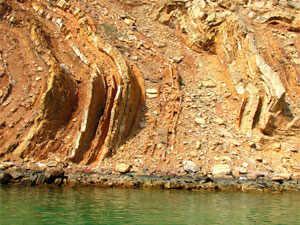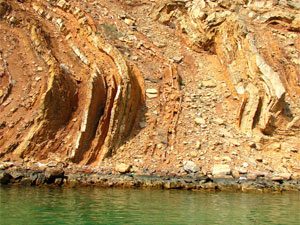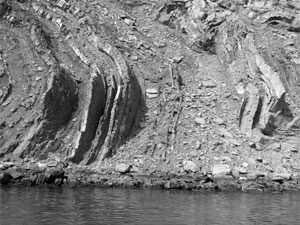
Dr. Francisco Hervé: Tras los misterios de nuestra geografía
Hace 300 millones de años, los continentes que hoy conocemos estaban unidos en una gran masa de tierra conocida como Pangea. Millones de años más tarde, este megacontinente comenzó a dividirse en dos: Laurasia en el norte y Gondwana en el sur. Cuando ésta última comenzó a dividirse, dio origen a distintos continentes, entre ellos África, Australia y la Antártica e incluso a Sudamérica.

La formación de los continentes ha intrigado a los geólogos por décadas. Y Chile, gracias a su particular geografía, se ha convertido en un gran laboratorio para su investigación. En ello se encuentra el Dr. Francisco Hervé, académico de la carrera de Geología de la Facultad de Ingeniería UNAB, quien junto a su equipo conformado por estudiantes y geólogos nacionales y extranjeros, busca conocer la evolución geológica del margen Pacífico de Gondwana en la zona sur de Chile y en la Península Antártica.
“El objetivo de nuestro trabajo es identificar procesos geológicos mayores, tales como magmatismo, deformación de las rocas, y translación de grandes cuerpos de roca, entre otros, con especial énfasis en las rocas de la era paleozoicas, etapa en la que se formó Pangea”, relata el Dr. Hervé.
En ese mismo sentido, el investigador de la UNAB agrega que esta investigación no sólo contribuye a entender el desarrollo geológico de Gondwana, sino que también “arroja cierta luz sobre los fenómenos geológicos actuales, considerando que Chile es además uno de los países con mayor actividad sísmica y volcánica en el mundo”.
Entre las conclusiones iniciales a las que ha llegado el equipo del Dr. Francisco Hervé está la identificación de la formación de un prisma de acreción –o acumulación de sedimentos- formado por la subducción de placas tectónicas en el margen de Gondwana, el cual se habría formado en el Paleozoico Superior.
Finalmente, el académico de la Facultad de Ingeniería UNAB destaca que su in- vestigación pretende aportar conocimientos relevantes sobre la formación de los continentes y las características propias de nuestra geografía, pero que también es importante dimensionar el valor que estos estudios tienen para los alumnos en formación. “Ellos tienen la posibilidad de formar redes de colaboración en Chile y el extranjero, las que dinamizan el trabajo y resultan en avances multidisciplinarios relevantes; lo que complementa nuestra labor como docentes y formadores”.
Descargar PDF: Tras los misterios de nuestra geografía
Discovering the mysteries of our geography
Three hundred million years ago, the continents were joined together in a great landmass known as Pangea. Millions of years later, this supercontinent began to divide in two, becoming Laurasia in the north and Gondwana in the south. When Gondwana broke apart, it gave rise to a number of continents, including Africa, Australia, Antarctica, and South America.

The formation of the continents has intrigued geologists for decades. Chile, thanks to its unique geography, has become a spectacular natural laboratory for geological studies. One of these studies is led by Dr. Francisco Hervé, researcher for the Geology Program, Faculty of Engineering at Universidad Andrés Bello. Together with a team of students and national and international geologists, Dr. Hervé is studying the geological evolution of the Pacific border of Gondwana in the southern regions of Chile and on the Antarctic Peninsula.
“The objective of our work is to identify principal geological processes, such as magnetism, rock deformations, and the translocation of large bodies of rock, among others, with special emphasis on rocks from the Paleozoic Era: the era during which Pangea was formed”, states Dr. Hervé.
Moreover, Dr. Hervé adds that this research not only contributes towards understanding the geological formation of Gondwana, but that it also “shines light on certain current geological phenomena, considering that Chile is a country with some of the highest seismic and volcanic activities in the word”.
The initial conclusions determined by Dr. Francisco Hervé’s team include the identification of an accretionary prism, or an accumulation of sediments, formed by the subduction of tectonic plates on the border of Gondwana. This prism would have formed during the late Paleozoic Era.
Finally, Dr. Hervé highlights that while his research will provide relevant knowledge regarding the formation of continents and the characteristics of Chile’s own geography, it is also important to mention the value that these types of studies have in student’s formation. “The students are given the chance to form collaboration networks both in Chile and overseas, networks that drive research and result in relevant multidisciplinary advances. [Providing these opportunities for collaboration] complements our work as teachers and mentors”.
Download PDF: Discovering the mysteries of our geography
